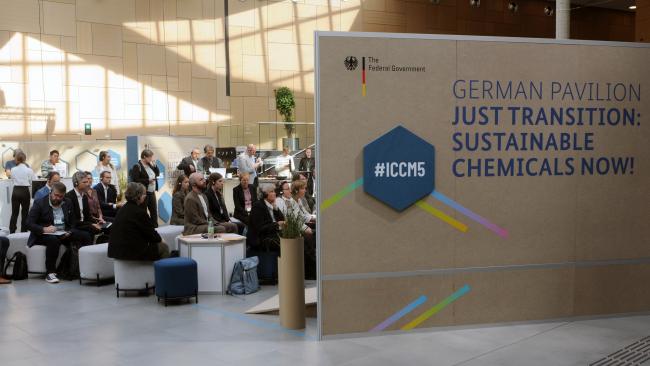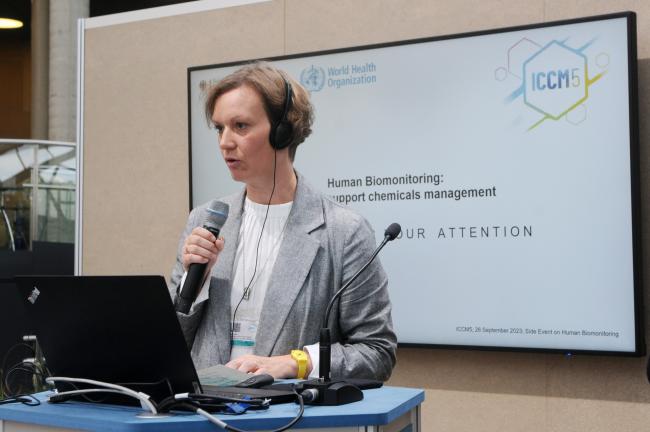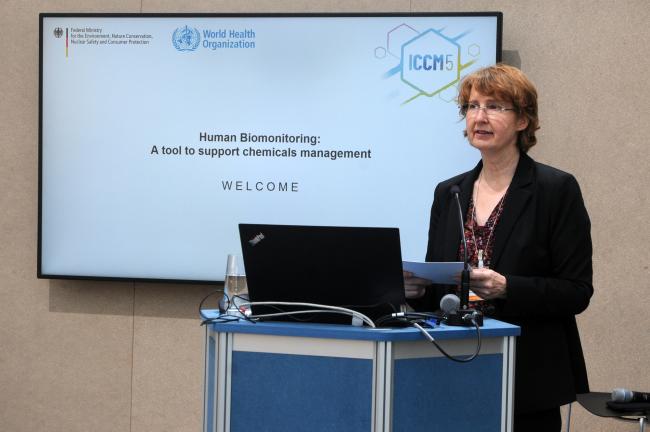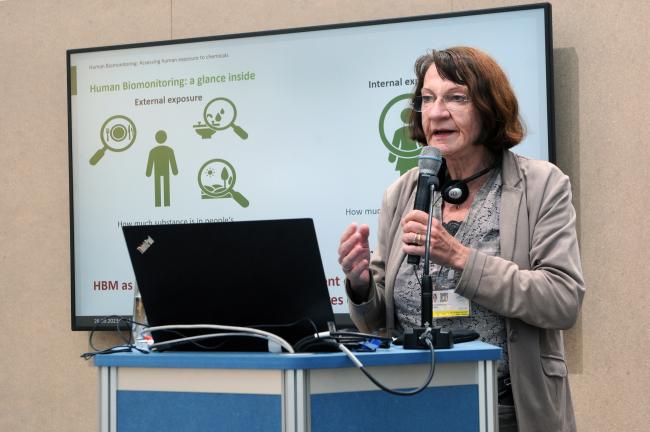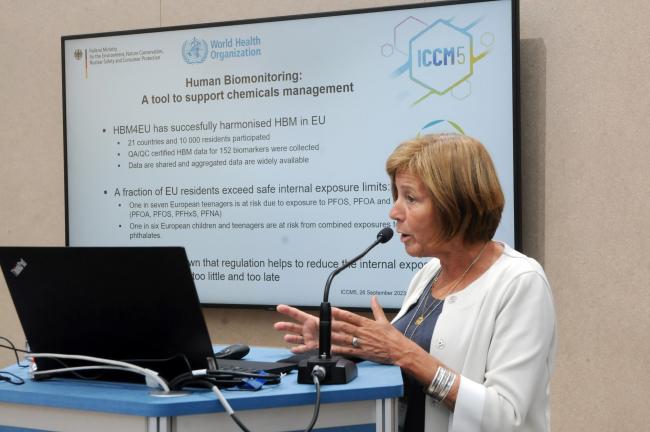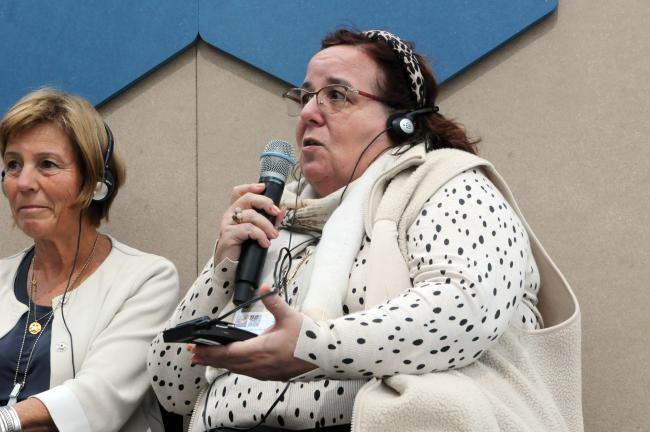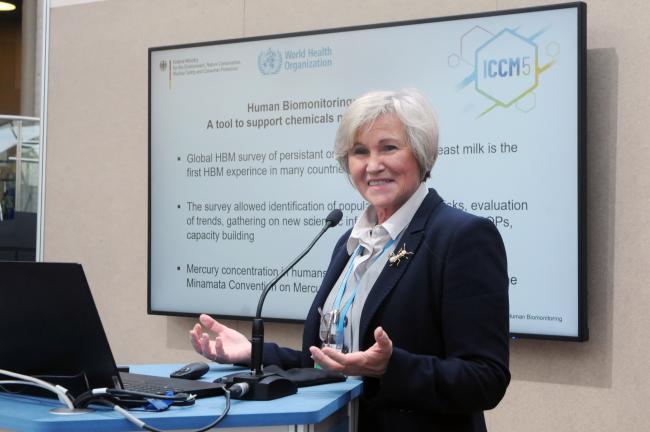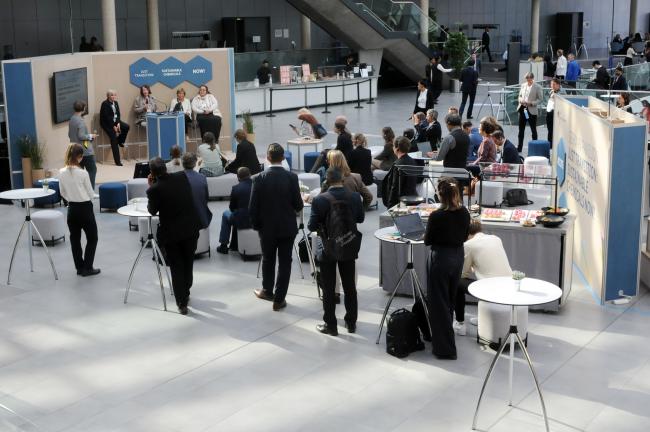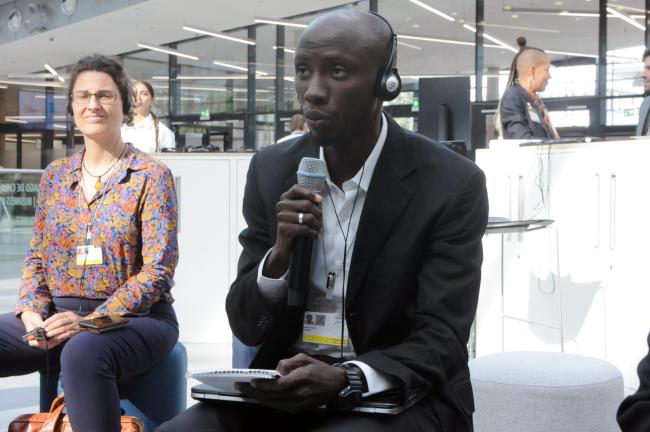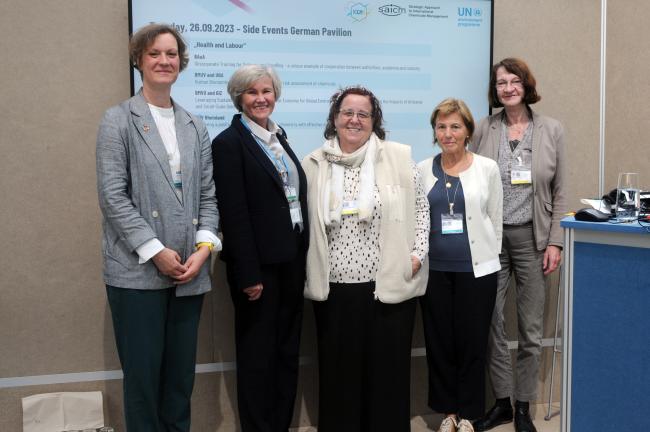About
This ICCM5 side event explored a vital scientific tool for assessing human exposure to chemicals and pollutants at national, regional, and global levels.
As the need to address chemical pollution becomes increasingly prominent in intergovernmental negotiations, assessing human exposure to chemicals and pollutants is becoming ever more important. Human Biomonitoring (HBM) is an important scientific tool performing this function, providing critical data to safeguard public health. HBM not only helps in identifying emerging health risks and tracking exposure trends, but it also evaluates the effectiveness of regulatory measures, allowing for the development of evidence-based policies. The information generated through HBM informs risk assessment, risk management, and public health strategies.
This side event, moderated by Cornelia Marschel, Head of Division Environment and Health, Federal Ministry for the Environment, Nature Conservation, Nuclear Safety and Consumer Protection (BMUV), provided a platform for discussing HBM-related interventions at the national, regional, and global levels, including exploring the critical role HBM plays in assessing and mitigating risks to human health and the environment. The event underscored the importance of international commitments to make HBM accessible to all and sought to raise awareness about the critical role of HBM by demonstrating successful HBM initiatives. It further showcased the utility of HBM in monitoring the success of multilateral agreements and highlighted capacity building on HBM for its effective use. Discussions revealed that HBM is not just a scientific endeavor but, importantly, also a tool for action, informing policies and reinforcing international commitments.
Christiane Rohleder, State Secretary, BMUV, noted that measuring the concentration of chemical pollutants in the human body is increasingly needed as exposure to chemical products rises together with associated health risks. She described efforts to analyze public exposure to dangerous chemicals at the national level and noted that similar efforts expand to other regions. She highlighted the launch of a partnership on HBM at the 2023 seventh ministerial World Health Organization (WHO) conference, creating a permanent network with countries from Southeastern Europe, the Caucasus, and Central Asia, following on from the successful European Human Biomonitoring Initiative.
Marike Kolossa-Gehring, German Environment Agency, discussed external exposure, which addresses how much of a given chemical substance is in people’s environment and internal exposure, focusing on exposure levels in the human body. She emphasized that HBM is an innovative tool, offering integral assessment of chemical exposure from all exposure sources and routes, and delivering more motivating results compared to mere mathematical calculations.
She stressed that HBM allows for the identification of priority substances as well as the number of people exposed. She underscored that all adolescents are exposed to perfluorooctane sulfonic acid (PFOS) and seven out of ten to perfluorooctanoic acid (PFOA), noting that a group risk assessment is needed. She highlighted HBM studies as an innovative tool to support policy by: establishing a representative database for current chemical exposure; prioritizing chemicals for regulatory action and deriving effective regulatory measures; raising awareness and providing recommendations to citizens; and informing policies on voluntary-level agreements and legally binding regulations.
Greet Schoeters, University of Antwerp, focused on the HBM4EU project, which was launched in 2016 with the aim of improving the collective understanding of human exposure to hazardous chemicals and developing HBM as an exposure assessment method. She emphasized that HBM4EU has successfully harmonized HBM in the EU, with more than 10,000 residents participating in the project with data widely shared and aggregated.
Schoeters underscored that one in seven European teenagers is at risk due to exposure to PFOS, PFOA, and the sum of four perfluoroalkyl and polyfluoroalkyl substances (PFASs), with one in six European children and teenagers at risk from combined exposures to five phthalates. She concluded by stressing the need for more stringent regulations, in particular regulating PFASs as a group.
Branislava Matić Savićević, Institute of Public Health, Serbia, emphasized that HBM is one of the main criteria for deciding on decontamination procedures, and stressed that communicating HBM results to communities is complex but is the most important task of HBM surveys. She noted that, at the national level, relevant initiatives followed a bottom-up approach as studies on lead contamination in adolescents were initiated by worried parents.
She further highlighted a study in Bor, a city in eastern Serbia, which has a long copper mining tradition and many incidents of lung and other types of cancer. She added that northern Serbia as well as parts of Croatia and Hungary have a lot of naturally occurring arsenic, stressing that HBM studies should be performed, at least for lead and arsenic. She called for programme-based activities, cautioning that data from project-based activities are usually lost along the way.
Irina Zasenskaya, WHO Regional Office for Europe, European Centre for Environment and Health, provided the global HBM vision, addressing the Stockholm and Minamata Conventions. She stressed that the approach on persistent organic pollutants (POPs) has been harmonized under the Stockholm Convention allowing for data comparison. She noted that many countries have their first HBM experience within the framework of global HBM surveys on POPs. She highlighted large capacity inequities between developing and developed countries, including in laboratories and human resources, which creates obstacles for a globally harmonized approach.
Zasenskaya underscored that the effectiveness evaluation framework using HBM will is expected to be agreed at the fifth meeting of the Conference of the Parties (COP5) to the Minamata Convention in early November 2023, allowing the initiation of mercury HBM in countries with no experience. On the main barriers for implementation of a global HBM programme, she highlighted capacity building and awareness raising for HBM, which will create an HBM community that encourages the use of HBM for exposure assessment. In that respect, she drew attention to the relevant WHO Europe educational course.
In the ensuing discussion, participants focused on: experiences in organizing HBM initiatives in different impacted communities; the “Map of Forever Pollution” under the “Forever Pollution Project,” which shows the extent of environmental contamination with PFAS chemicals; and elements for designing a successful HBM study.
Organizers: BMUV and WHO
Contact: Marike Kolossa-Gehring I marike.kolossa@uba.de
For more information: https://www.hbm4eu.eu/, https://www.umweltbundesamt.de/en/topics/health/commissions-working-groups/human-biomonitoring-commission-hbm-commission
All ENB photos are free to use with attribution. For this side event please use: Photo by IISD/ENB | Diego Noguera.
To receive free coverage of global environmental events delivered to your inbox, subscribe to the ENB Update newsletter.

